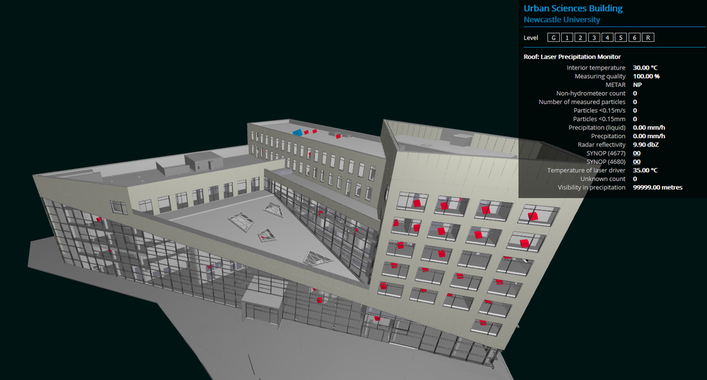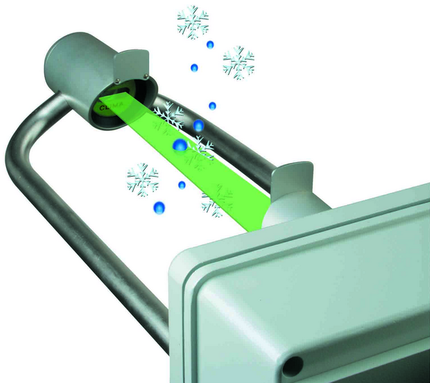EML contribute to the largest set of publicly available real-time urban data in the UK
|
In June 2018, EML installed an automatic weather station and two optical disdrometers on the roof of the award-winning Urban Sciencies Building in the city of Newcastle-upon-Tyne. Disdrometers are used for providing detailed information of the physical characteristics of precipitation. They will be used in a range of practical and research-focused applications, such as rainfall-radar verification and adjustment. |
This image is a 3D snapshot of the Urban Sciences Building, located in the centre of Newcastle upon Tyne, UK. The red cubes you can see in the picture are the locations of sensors that measure all kinds of variables. You can select any red cube and it will return in real-time the measurements being produced! This is reported in the top right hand corner for the selected (blue) cube, which in this case is the Laser Precipitation Monitor, installed by EML!
Visit this link to virtually explore the Urban Sciences Building and find out what is being "sensed"! |
|
Opened in September 2017, the £58million 12,500 sqm Urban Sciences Building (USB) is a flagship development. The building and its surrounding city area is a living laboratory underpinning research to make urban centres more sustainable for future generations.
As well as being home to the Urban Observatory, the building also includes a wide range of facilities funded through Newcastle University's role in the UK Collaboratorium for Research in Infrastructure and Cities (UKCRIC). The large amount of data produced by the compact MaxiMet Automatic Weather Station and two state-of-the-art optical disdrometers is stored by a vast digital architecture, along with billions of observations generated throughout Newcastle and its surrounding areas. The picture to the right shows how the optical beam produced by a Thies Laser Precipitation Monitor (LPM) is occluded by falling precipitation, and quantitative information such as particle fall velocity and drop-size ditribution is generated and recorded. All Urban Observatory data are archived here for researchers and the general public to use freely. |


